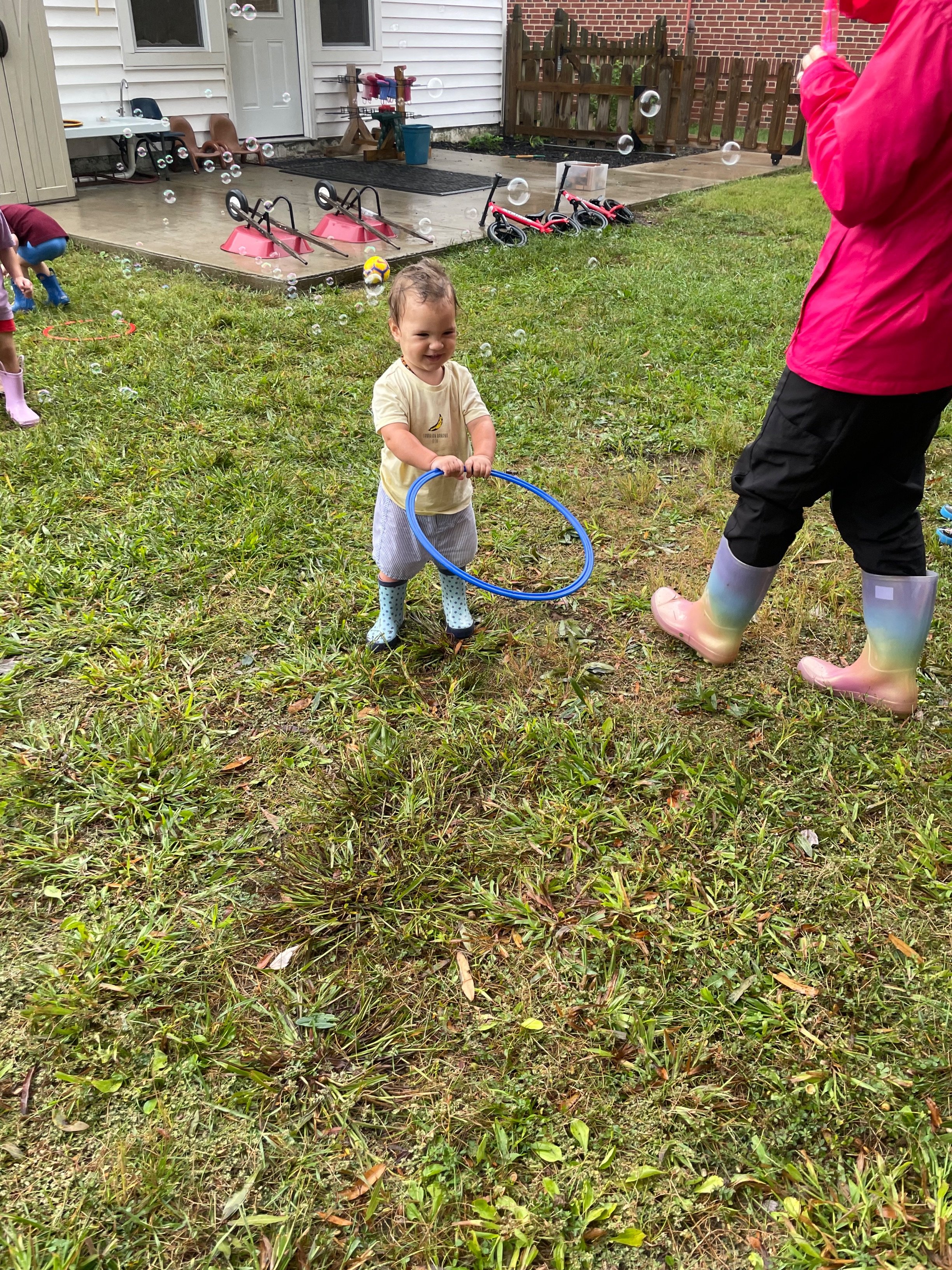Repetition is a concept with a terrible reputation. We complain if we have the same lunch for too many days in a row. We criticize films and books and songs for being "formulaic" when they reuse too many elements. We are anxious to blurt out, "you told me this story before" when the office storyteller begins an involved story he told you a few weeks back. We turn back on a car trip because we have forgotten something important and then feel interiorly crushed by having to retrace the same route we have just traveled.
Our human nature itself seems to rebel against repetition. As Americans, we must admit that a hunger for novelty is part of the national makeup. If that were not enough, we are also denizens of the 21st century, for whom the entertainment is endless and the conveniences instant. Waiting disgusts us. Repeated tasks strikes us as a call back to a less enlightened age.
And yet repetition, as unpopular as it, is so essential to what we do here at school. The ever quotable Christian philosopher Soren Kierkegaard called repetition "the reality and the seriousness of life." An old spiritual director of mine said the same using different words: "virtue is forged in the furnace of regularity."
What we do once is something we did once. What we do over and over again becomes who we are.
Let us use multiplication as a case study. In the Montessori elementary classroom there are very many materials that teach students this essential concept. A first year child will continue their primary work with the golden beads material, then move on to the small and large bead frames. Soon they will be introduced to the Stamp Game. All along they will be using chains from the bead cabinet and bead bars in other ways. There will also be materials which help them memorize their multiplication tables (what we usually call "math facts" nowadays): the multiplication bead board and various charts, such as the Table of Pythagoras work, a 10 by 10 grid in which a child will use tiles to fill in all the multiplication facts. Further work will take them to the checkerboard, the flat bead frame, and the bank game, as the children get accustomed to compound multiplication.
Yes, this seems like a lot of variety. At any given time a student in lower elementary will likely be using 2-3 of these materials as they dig into the concept from different angles. But do not forget that these works will be introduced and used over a four year period. Think of how long ago September of 2020 seems to you as you read this four long years later. Think of how long a single summer or a single December seemed to you when you were a child. This is a very long time for a child!
So let's zoom in. What will one child's work look like with one given material?
It begins with a presentation. Last week, a few first years and a few second years were introduced or reintroduced to the small and large bead frames. These are tools much like a color coded abacus, in which one row features beads representing units, another representing tens, and then hundreds, and thousands, and so on. The small bead frame can handle numbers only as large as 10,999. The large bead frame can go all the way up to 10,999,999. We also use color coded paper when we write down our problems to help cement the child's impression of the decimal system. (Please note, that when I use the phrase "decimal system" in these little essays, I am not referring to the numbers between the integers, but to our base-ten place value system of units and tens and hundreds and thousands and so on.)
Early presentations with this material are simply practicing forming numbers on the bead frame. A child hears, "seven-hundred ten" and arranges seven hundred beads, one ten bead, and zero unit beads. They will also see the teacher pull out a number of beads and be called on to interpret the beads and read off the number they represent. Next will be "static addition" and "static subtraction" (addition and subtraction without carrying or borrowing). After that, the carrying and borrowing arrive with "dynamic addition" and "dynamic multiplication". After a child has succeeded with these tasks, they will be shown multiplication using this material. As I sometimes say about particular Montessori materials, there are calculation tools and research tools, and this is a research tool. By that I mean that there are materials to use if one's aim is simply getting the correct answer in the fastest and easiest way, and other ones to use if you really want to "open the hood" and see how math works. Using the bead frame for multiplication is the latter sort. Children will sometimes breathe a sigh of relief when they move away from the bead frames to the checkerboard material, because they are all of a sudden getting more answers correct. Rare is the child, though, who has the perspective to see with gratitude all that was given to them by their work on the bead frames.
After the child receives each presentation, they are expected to practice with the material and work toward eventual mastery. Early problems they do are carefully curated by the teacher. Later on they are encouraged to invent their own problems. All the while, the adults in the classroom observe them. Are they working with focus? Are they getting the questions right or wrong? If they are wrong, what is the issue--lack of focus? Hurrying rather than working meditatively? Getting it right on the material and then recording incorrect numbers? Problems exchanging units for tens, tens for hundreds, hundreds for thousands?
After a decade in Montessori classrooms, I am only beginning to see that most problems a student has with math and language work, though, comes down to a lack of repetition.
I think we adults recognize that there are generally two ways to experience our work. It can be an unpleasant curse that we bear casually with cynicism or apathy. We protect ourselves from its rigors with daydreams. We think of lunch. We submerge ourselves in memory and planning and hope that muscle memory will do the work for us. People speak to us and we--eyes glazed, attention diffuse--ask them to repeat themselves because we were somehow not present even though we were right there. Where were we? We are unsure.
We can choose also to be single minded and concentrated. We can be present.
Have you felt the difference? If you do, you certainly do not need it described to you. If we dig deep and examine ourselves, how often we rob ourselves and our loved ones of this being present to the task at hand. We pack lunches with inattention. We drive with mind blank and grip loose, somehow reckless even at the speed limit.
After having spent much of my time since 2014 watching children work, I can tell you that this happens with children as well.
The essential ingredient is that the students are present to their work and are willing to practice again and again. Only then will the methods and concepts make the all-important move from short term memory to long term memory.
I will say it again: only with repeated practice will a student's learning become permanent.
That being said, what are some ways that you and I can work together to make repetition a way of life for our students?
1. Reduce the child's need for novelty. Don't be afraid to simplify your life with a meal plan. Don't be afraid to play chess against your child, or rummy, or go fish with your child again and again, rather than moving from game to game, toy to toy.
2. Valorize repetition in your home. There are books and films that reward repeated readings and viewings. There are others that overstay their welcome even the first experience. What are some books that you read every year or every few years.
3. Pray with scripture. You may be interested in looking into the Medieval method of praying with the words of the Bible known as Lectio Divina, which translates as "divine reading". A monk praying with a verse of scripture would repeat its words to himself over and over, much like how a ruminant chews its cud. (This is where we get the word "ruminate", to mean to dwell upon or meditate upon.) If there is any book which is begging to be read again and again, this is the one.
4. Let your child be bored. Let yourself be bored. I am dead serious. It will change their brain over time and help them in the classroom. I cannot overstate how much damage it does to our minds that we fill ever waking hour with entertainment. Can we use the bathroom without our phones? If not, how can we expect our children to multiply without talking with their friends? Family by family, we can resist the war on attention the culture and the corporations are waging against us. It will be difficult, but with consistency and regularity our families can transform. Let us help each other out in this effort. Give each other tips on how to reduce screen time. Give each other pointers on things the family can do together which are not mediated by entertainment technology.
5. Be okay with your child being uncomfortable. Growth often brings discomfort in the classroom. Perhaps a student would benefit from having an assigned spot in the classroom on a particular morning, far from their best friend who is capable of being an expert distractor. They will certainly not be happy about this. And yet it is the very best possible thing we can do for them on that particular day. For a student who does not want to practice their math work, having their work choice taken away is a tough pill to swallow. We pledge that when we need to, we will take this particular freedom away in order to serve the child better and prepare them for a greater freedom in the future.
Each of us in the classroom is being trained to make good choices. As I said in a discussion with a student earlier this week, to expect too much is unfair. I would not ask a student to borrow my car to go down to Dollar General and pick us up some milk for a cooking project. Nor would I assign someone 75 math problems. That is just too many! In the same way, to watch a child repeatedly fail to choose the proper amount of practice is a dereliction of duty. Thus we will always drive them to practice the skills they need to practice. It will be uncomfortable. It seems to rebel against everything we are as 21st century Americans! But we didn't come to this school to go with the flow. RMS is countercultural. So let us be mavericks, and apply ourselves to the work we must do with attention, completing problem after problem until these tasks become a part of us.









